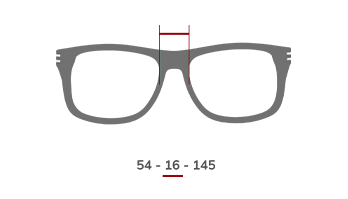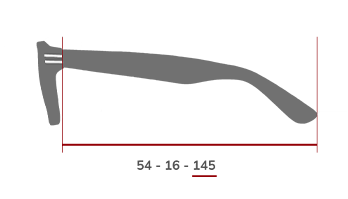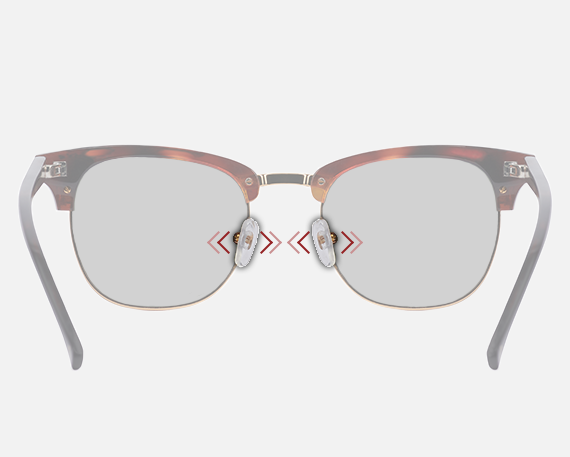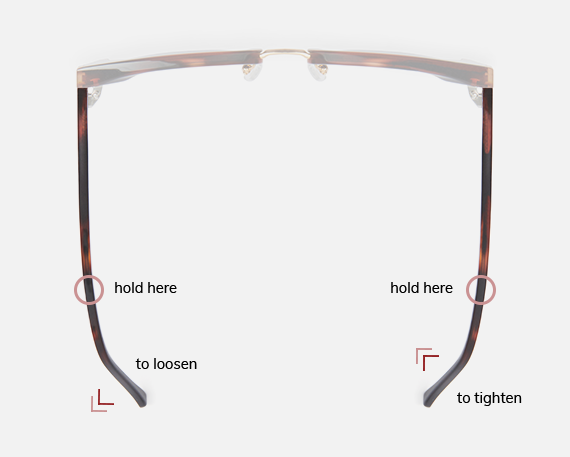Get your right fit.
Eyewear measurements are universal and typically listed on the inside of one of the temples in millimeters (mm). Knowing the measurements of frames that already fit you well can be helpful in choosing new styles and sizes.

Eyewear measurements are universal and typically listed on the inside of one of the temples in millimeters (mm). Knowing the measurements of frames that already fit you well can be helpful in choosing new styles and sizes.

The lens measurement refers to the width of the lens. The wider the lens, the more eye coverage your glasses will have. This will be the first number listed.

The bridge measurements refers to the space between each lens. The bridge and lens measurements will account for a large portion of the overall frame width.

The temple length will tell you how long each temple is. This will be the third number listed in the size specifications.
Depending on your preferences, your frames may need a little adjustment. Here’s a quick guide to finding the right fit and how to do it.

Fit Issue:
For frames that sit too high, use your thumbs to apply outward pressure on the nose pads to open up the gap between them.
For frames that sit too low, simply pinch the two nose pads inward simultaneously to narrow the gap.

Fit Issue:
Open the temples and set the frames flat on the table. If one of the temple tips isn’t touching the table, then hold both temples near the hinges and simply twist the frames into the correct position.
Pulling the higher side down towards the table and the opposite side upwards will adjust the frames to lay flat on the table and sit straight on your face.

Fit Issue:
For frames that are slightly too tight, we recommend wearing them for a few days as they will often times adjust on their own. If further adjustment is needed, simply push the temples outward until you find the right fit.
For frames that are too large, bend the temple tips inwards towards each other to tighten the fit around your head.